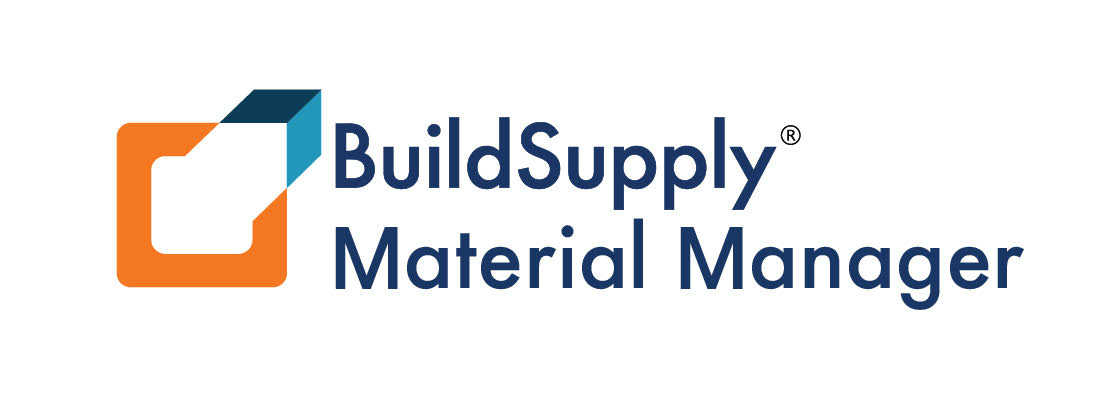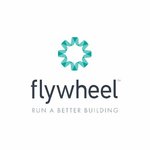What Is Building Maintenance Management Software?
Building Maintenance administration Software (BMMS) is an effective solution for streamlining and optimizing the administration of building maintenance tasks. It is specifically developed to meet the demands of facility managers, property owners, and maintenance staff by providing a single platform for managing all maintenance-related tasks.
This program allows users to efficiently track, schedule, and oversee critical maintenance tasks, ensuring that a building runs smoothly and is well maintained. One of the primary benefits of BMMS is the ability to store and arrange all maintenance data in a single place. This reduces the need for manual record-keeping and enables managers to obtain information quickly and simply.
It also includes features like work order management, task tracking, and resource allocation, making it an invaluable tool for organizing maintenance activities. Another major advantage of adopting BMMS is the ability to schedule and allocate work to maintenance teams. This software allows users to create periodic maintenance schedules, prioritize essential jobs, and efficiently allocate resources.
It also enables managers to track the status of maintenance projects in real time, ensuring that all chores are done on schedule and within budget. BMMS also has comprehensive reporting and analytics capabilities, which provide valuable information on maintenance operations and expenditures. This data can be utilized to detect trends, make data-driven decisions, and boost overall maintenance performance.
Furthermore, BMMS may be connected with other systems such as asset management software and building automation systems, which improves its capabilities and allows for a more holistic approach to building maintenance. To summarize, BMMS is a crucial tool for any organization seeking to successfully manage maintenance duties, minimize expenses, and improve the overall condition of their facility. It simplifies maintenance procedures, boosts productivity and efficiency, and ultimately results in a better-managed and well-maintained facility.
What Are The Recent Trends In Building Maintenance Management Software?
Building maintenance management software has grown greatly in recent years, owing to technological improvements and changes in the facility management sector. As a result, several significant themes are defining the business and affecting the development of building maintenance management software. As a buyer, it is critical to stay current on these trends in order to make an informed selection when choosing a software solution for your maintenance needs.One key development in building maintenance management software is the shift to cloud-based solutions. This enables real-time data sharing and access from anywhere, improving communication and collaboration between maintenance teams and other departments. It also eliminates the need for expensive on-site servers, lowering the likelihood of data loss.
Furthermore, with the rise of remote working, cloud-based software enables the easy control and monitoring of maintenance chores from any location with an internet connection. Another trend is to include Internet of Things (IoT) technology into maintenance management software. This enables the monitoring and tracking of equipment and assets, resulting in predictive maintenance and reduced unexpected downtime.
IoT technology also allows for the automation of routine maintenance chores, freeing up maintenance personnel' time to focus on more complicated or urgent issues.Furthermore, there is an increasing demand for mobile access in building maintenance management software. With the growing popularity of smartphones and tablets, maintenance crews might benefit from having software on their mobile devices.
This helps them to stay connected and informed on maintenance duties while on the fly, boosting efficiency and productivity. Data analytics and artificial intelligence (AI) are also becoming increasingly popular in the development of maintenance management software. These technologies can use data from a variety of sources, including equipment sensors and maintenance records, to deliver insights and predictive maintenance suggestions.
This enables maintenance staff to make data-driven decisions and improve maintenance schedules. Finally, user experience and user-friendly interfaces are becoming increasingly important in the development of maintenance management software. As technology progresses, people expect a seamless and intuitive software experience. As a result, software engineers prioritize user experience to make software more accessible and user-friendly for maintenance teams with varying levels of technical skill.
Benefits Of Using Building Maintenance Management Software
Building upkeep is an important part of operating any commercial or residential building. Without adequate upkeep, buildings can quickly deteriorate, costing property owners a lot of money in repairs and perhaps losing tenants or clients. This is where the Building Maintenance Management Software (BMMS) comes in. BMMS is an effective solution for streamlining and organizing all building maintenance duties, ensuring that properties are well-maintained and in excellent condition.
Let's look at the benefits of utilizing BMMS and why it's a worthwhile investment for any property owner or management.
1. Centralized Maintenance Management: One of the main advantages of BMMS is that it allows property owners to consolidate all maintenance-related chores. Everything can be controlled from a single platform, including scheduling regular inspections, placing work orders, and tracking progress. This removes the need for several spreadsheets and documentation, resulting in increased organization and efficiency.
2. Improved Productivity And Time Management: BMMS simplifies the maintenance process, improving productivity and time management. By automating tasks, property owners and managers can prioritize and focus on more important issues, resulting in a significant reduction in manual labor and administrative tasks. This saves time, allowing maintenance staff to execute jobs faster and more efficiently.
3. Cost Savings: Another key benefit of implementing BMMS is cost reduction. Property owners can avoid growing concerns and incurring higher repair costs by effectively managing maintenance duties. BMMS also assists in identifying maintenance requirements and scheduling repairs or replacements before they become serious issues, lowering maintenance costs and prolonging the lifespan of building components.
4. Improved Communication And Collaboration: Effective communication and collaboration are essential for proper building upkeep. BMMS allows property owners and maintenance staff to connect and share information in real time. This means that everyone is on the same page, which leads to faster decision-making and more effective problem-solving.
5. Detailed Reporting And Analysis: BMMS also offers complete reporting and analytics tools, which allow property owners to evaluate maintenance performance, manage spending, and find areas for improvement. This data enables educated judgments and improves overall maintenance plans, resulting in cost savings and increased efficiency.
6. User-Friendly Interface: Most recent BMMS systems have a user-friendly interface that requires no training. This implies that everyone involved in building maintenance can quickly learn and apply the software, making it an invaluable tool for companies with high employee turnover or limited training resources.
Important Factors To Consider While Purchasing Building Maintenance Management Software?
When it comes to selecting building maintenance management software, numerous criteria must be addressed to ensure that you get the best option for your firm. These characteristics have an impact not only on the software's effectiveness, but also its total worth and ROI. As a buyer, it is critical to thoroughly consider these factors before making a selection.
Here are the key factors to consider:
1. Scalability: One of the most important factors to evaluate is the software's capacity to scale. As your firm expands, so will your maintenance requirements. As a result, it is critical to select a solution that can adapt to your changing needs and support an increasing number of assets, users, and locations.
2. Features And Functionality: The software should include a complete set of features and functionality that address your specific maintenance management requirements. This could involve work order administration, scheduling, inventory management, preventative maintenance, asset tracking, and reporting. Make careful to examine your organization's needs and compare them to the software's functionality.
3. User-Friendly Interface: The software's interface should be simple and straightforward for your staff to understand and operate. A cluttered and confusing interface can cause confusion and slow adoption, ultimately affecting your maintenance process.
4. Mobile compatibility: In today's fast-paced environment, the ability to access and handle maintenance activities while on the go is critical. Look for software that has a mobile app or is compatible with mobile devices, so technicians can access and update work orders, inventory, and schedules in real time.
5. Integration Capability: The software should be able to integrate with your current systems, such as accounting or inventory management software. This not only streamlines your maintenance operations, but also ensures data consistency and correctness across departments.
6. Customer Help: Because maintenance issues might occur at any time, the software provider's customer help must be reliable. Look for a vendor who provides 24/7 assistance, several channels of communication, and quick response times.
7. Data Security: Because sensitive data is housed in the program, it is critical that it has strong security mechanisms in place. This includes data encryption, user access limits, and regular backups to prevent data loss.
8. Cost: While price should not be the only deciding factor, it is a significant consideration when choosing any software. Look for a solution with competitive cost that fits inside your budget. Keeping these things in mind allows you to make an informed selection when selecting building maintenance management software that fulfills your organization's requirements and efficiently supports your maintenance operations. Consider requesting demo or trial versions of various software and include key stakeholders from your team in the review process to verify that the chosen solution is the best fit for your company.
What Are The Key Features To Look For In Building Maintenance Management Software?
When deciding on the finest Building Maintenance Management Software for your firm, it is critical to evaluate the features that will fulfill your specific requirements while also improving the overall efficiency of your maintenance activities.
1. Work Order Management: The program should provide a comprehensive and easy-to-use work order management system for tracking and assigning jobs, scheduling repair requests, and monitoring progress.
2. Preventive Maintenance Scheduling: Choose a system that automates preventive maintenance scheduling based on time, meter readings, or consumption. This function can help reduce equipment downtime and increase its longevity.
3. Asset Management: The program should enable you to produce and manage a thorough inventory of all assets in your building. This tool allows you to monitor repairs, generate reports, and plan replacements or upgrades.
4. Inventory Management: A good inventory management function will allow you to watch the stock levels of maintenance supplies and equipment and restock them as needed. This can assist prevent stockouts and ensure maintenance activities are completed on schedule.
5. Mobile Access: In today's fast-paced world, technicians must be able to receive and perform repair orders while on the road. This can boost productivity and reduce paperwork.
6. Integration with Other Systems: If your firm uses other software systems, such as accounting or procurement, you must verify that the Building Maintenance Management Software works seamlessly with them. This can help to streamline procedures and reduce the number of duplicate data entries.
7. Analytics and Reporting: Look for software that allows you to analyze data and generate reports. This can help you detect patterns, track maintenance expenses, and make informed decisions about future plans.
8. User-Friendly Interface: The software's interface should be straightforward and simple to use. This can help to cut training time and increase user acceptance.
9. Customizable Dashboards: A customizable dashboard may give you a personalized picture of your maintenance operations, allowing you to see critical data and performance indicators at a glance.
10. Customer Assistance: Last but not least, customer assistance is a critical consideration while selecting any product. Make careful to select a provider who provides dependable and prompt technical support when necessary. Finally, thoroughly examining these critical aspects can help you choose the finest Building Maintenance Management Software for your firm, resulting in more simplified operations, increased productivity, and long-term cost savings.
Why Do Businesses Need Building Maintenance Management Software?
Building maintenance management software is a strong tool that helps firms manage and streamline building maintenance tasks. It provides a diverse set of features and functionalities tailored to the individual demands of enterprises, making it a crucial investment for businesses of all sizes.
In this buyer's guide, we will look at the top reasons why organizations need building maintenance management software and how it may help their operations. Improved
1.Maintenance Management: One of the fundamental reasons why organizations use building maintenance management software is to enhance their maintenance management operations. This program enables firms to track and manage all maintenance chores in a single spot, reducing the need for spreadsheets and manual record-keeping. It also gives real-time updates on maintenance requests, work orders, and scheduled maintenance, ensuring that maintenance issues are resolved on time and with efficiency.
2.Cost Savings: Building maintenance management software can help organizations save money over time. Businesses that accurately document all maintenance tasks can uncover areas where they can save money and optimize their spending. The program also enables firms to schedule preventive maintenance, which reduces the likelihood of breakdowns and costly emergency repairs. Furthermore, some software includes capabilities such as inventory management, which allows firms to keep track of their maintenance supplies and avoid wasting on unneeded products.
3.Increased Efficiency: Building maintenance management software automates repetitive and time-consuming processes, allowing personnel to focus on more important obligations. Businesses can increase response times and reduce downtime by implementing automated work orders and maintenance schedules. It also removes the possibility of human errors, guaranteeing that all maintenance chores are executed correctly and on time. This increased efficiency has the potential to boost production, reduce operational costs, and improve customer happiness.
4.Improved Communication: Clear communication is essential for optimal building upkeep. Businesses can use building maintenance management software to increase communication among maintenance teams while also streamlining contact with occupants, contractors, and other stakeholders. Users can receive real-time notifications and updates on maintenance activities, request progress, and schedule changes, resulting in greater coordination and faster resolution of issues.
5.Data-Driven Insights: Access to data is a significant benefit of building maintenance management software. It enables enterprises to collect, monitor, and analyze maintenance data in order to get important insights. This data can help firms make better decisions about budgeting, resource allocation, and finding areas for improvement. Businesses can use these information to optimize their maintenance procedures, increasing efficiency and cost savings.
How Much Time Is Required To Implement Building Maintenance Management Software?
The implementation time for building maintenance management software varies depending on numerous aspects, including the organization's size, software complexity, and level of customization required. However, properly implementing the software and integrating it into your existing systems and procedures might take anywhere between three months and a year on average.
During the early phases, it is critical to devote adequate time to fully comprehending the software and its features, as well as training your team members on how to utilize it successfully. This will ensure a smooth transition and shorten the time required for changes and troubleshooting. Larger enterprises, with several sites and sophisticated maintenance operations, may require more time to implement than smaller ones.
Similarly, if your program needs to be integrated with other systems, such as accounting or asset management software, this may increase the implementation time. It is crucial to remember that the implementation time is not completely determined by the software itself. Active participation and collaboration from your team members and key decision-makers are critical to ensuring a successful and timely implementation.
As a result, it is recommended to develop a clear implementation plan and assign specialized people to oversee and manage the process. Investing time and effort in a thorough implementation process will pay off in the long term, allowing you to fully exploit the software's capabilities and successfully optimize your maintenance management procedures.
What Is The Level Of Customization Available In Building Maintenance Management Software?
Building maintenance management software allows for varying levels of customisation to match the unique needs and requirements of different buildings and assets. This provides buyers with a bespoke tool that caters to their specific maintenance operations, rather of being constrained to a one-size-fits-all solution. At the most basic level, most building maintenance management software allows customers to personalize their dashboard and user interface, including the addition or removal of specific features and modules.
This allows users to construct a user-friendly and organized interface that is consistent with their workflow. Furthermore, users can usually change the job and work order settings, such as specifying task kinds and allocating them to certain teams or individuals. They can also create recurring tasks and change the notice and alert settings based on the urgency and priority of specific tasks.
Building maintenance management software enables for unique data and information tracking. Users can decide which data fields are required and create custom fields to track any information related to their building or property. Some software even allows users to create custom reports and dashboards, providing them the freedom to generate insights and data visualizations based on their individual needs and preferences.
This is especially important for property managers who may have a broad portfolio of buildings and want separate reports for each one. When it comes to integrations and compatibility, purchasers can select software that works with their existing systems and applications, allowing for seamless data sharing and process simplification.
Which Industries can benefit the most from Building Maintenance Management Software?
Building maintenance management software is a strong tool that may help streamline and optimize maintenance operations across a wide range of industries. From commercial buildings to healthcare facilities, this software provides several benefits that can improve any business's bottom line. But which sectors will profit the most from employing building maintenance management software? Let's go exploring.
1. Commercial Real Estate: The commercial real estate industry manages a diverse range of properties, including office buildings, retail spaces, and everything in between. With so many properties to manage, it can be difficult to keep track of maintenance schedules and work orders. Building maintenance management software can help by offering a single platform for managing maintenance tasks, tracking inventory and equipment, and generating performance data. This can assist commercial real estate companies save time, money, and improve efficiency.
2. Hospitality: The hospitality industry, which includes hotels, resorts, and restaurants, is focused on providing an extraordinary guest experience. Any maintenance difficulties can quickly degrade the guest experience and lead to negative feedback. Building maintenance management software can assist prevent such incidents by streamlining maintenance operations, assuring timely repairs, and reducing downtime. It also allows you to track costs and generate reports that can help with budgeting and decision-making.
3. Healthcare: It is critical to maintain a safe and sterile environment for both patients and workers. Regular maintenance of equipment and facilities is required to guarantee compliance with health and safety laws. Building maintenance management software can assist healthcare facilities in completing preventative maintenance chores, managing work orders, and tracking compliance documentation. This can help to prevent hefty penalties while also ensuring the safety of both patients and staff.
4. Education: Schools and colleges have a large number of facilities and equipment that require regular repair. Building maintenance management software allows educational institutions to ensure that their facilities are always in good shape, providing a suitable learning environment for students and staff. The software can also track maintenance expenditures, which can help with budgeting and resource allocation.
5. Government: Federal, state, and municipal governments maintain a large number of structures, such as offices, libraries, and public facilities. Maintaining all of these features can be a hard and time-consuming undertaking. Building maintenance management software can help government agencies streamline maintenance operations, increase communication, and keep track of spending. This can help taxpayers save money while improving the efficiency of governmental services.
Conclusion
Finally, investing in building maintenance management software can significantly improve the efficiency, productivity, and cost-effectiveness of your maintenance operations. By optimizing processes and centralizing data, this sort of software can help teams save time, decrease errors, and increase communication. When selecting a software solution, carefully assess your requirements and prioritize features that are critical to your specific organization.
Consider the size and complexity of your facilities, the amount of maintenance personnel, and any specific needs that your operations may have. It is also critical to select a recognized and trusted vendor to ensure that your software receives continuing support and maintenance. Look for organizations who have a proven track record, great client feedback, and a variety of training and support choices.
Finally, the correct building maintenance management software can deliver a considerable return on investment by streamlining the overall maintenance process and, as a result, enhancing facility quality. We hope this buyer's guide has offered useful information and will help you make an informed selection. Choose prudently and enjoy the benefits of a well-kept and cost-effective operation.






















